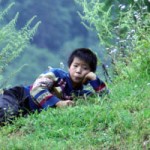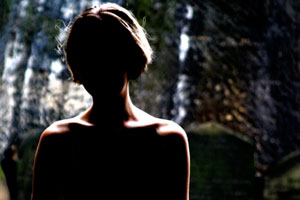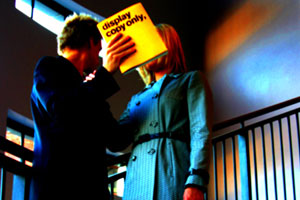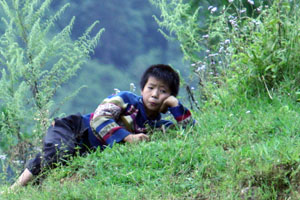
As all photographers know, travel photography can be about more than safeguarding memories. Holidays are the perfect time to discover new cultures and customs, be outside of one’s comfort zone, eat new food, and, of course, really get stuck into the different lenses and ISO numbers. Coming home with that perfect picture of something or someone that fascinated you makes the enjoyment of the getaway last that much longer.
The way the local population expects you as a photographer to behave with your camera may be very different in countries other than your own. This Photo Etiquette may, however, not be easy to understand or adhere to, especially when it comes to photographing people as a subject, so we decided to have a closer look at what you might encounter…
When travelling, I find that shots of sights, animals and nature are often rewarding, but not enough. Photographing people gives a richer texture to the cultures you have visited. In hindsight, I have often regretted foregoing on a large part of the experience, simply because I did not know whether it was okay to take photos of people.
Not wishing to be photographed
 Many people do not wish to be photographed, for many different reasons. Native peoples, such as some Native Americans in the US, might refuse being photographed because they believe a mirror does not reflect reality, but a persons’ soul. A picture, taken by a device that relies heavily on mirrors, may therefore capture and enslave the soul. Sometimes, this restriction only counts for infants and children, as their souls are fragile, and can more easily leave the body.
Many people do not wish to be photographed, for many different reasons. Native peoples, such as some Native Americans in the US, might refuse being photographed because they believe a mirror does not reflect reality, but a persons’ soul. A picture, taken by a device that relies heavily on mirrors, may therefore capture and enslave the soul. Sometimes, this restriction only counts for infants and children, as their souls are fragile, and can more easily leave the body.
Others, such as some Caribbean cultures, believe that a representation of a person may be used in ‘sympathetic magic’ to cast voodoo spells on the person in question. Others again, especially in tourist areas, do not want to be in photos because, frankly, they are sick of them. Try to imagine how you would feel if a constant stream of tourists would come by your office and photograph you.
 In some countries, such as China, taking someone’s picture without their consent is simply extremely rude. Others might feel they are not photogenic, and do not want their face to be splashed all over Flickr. And you need to be wary that some locations (places of worship, official buildings and structures, museums and military bases) may prohibit photography for security reasons.
In some countries, such as China, taking someone’s picture without their consent is simply extremely rude. Others might feel they are not photogenic, and do not want their face to be splashed all over Flickr. And you need to be wary that some locations (places of worship, official buildings and structures, museums and military bases) may prohibit photography for security reasons.
If all that was not enough, you also need to consider the implications of a photo. If you might land someone in trouble for taking the photo (if photographing individuals at a political rally etc.) you might want to reconsider taking the photo. In other words, there should be a lot of prudence and respect on your part as the photographer.
Permission is key
Figuring out when it is okay to take a photo and when it is not will help you bring home more than just pictures of puppies, buildings and your travelling partner. The best way of finding this out is simply by asking. I have been asked for money in exchange for a photo on several occasions in India, and you will have to consider whether that money is worth the photo. If you deem it is not, just smile, shake your head and move along. Alternatively, they might ask you to buy something off them. Again, by all means do, if it is something you wanted, and if you think the price is worth the photo, if not, just keep going.
 But, in general, rule number one is, get permission. It is essential that your behaviour and attitude is not one of right, but one of friendly coexistence. When you smile and nod while pointing at your camera, it is pretty clear what you want. This might sometimes mean that your photo will not be as spontaneous as you might wish, but at least you will not end up in sticky situations where the subject feels their personal space, or religion is violated. Especially on the topic of photographing children, you need to be very cautious, make sure to ask the parents or guardians for permission, no matter where in the world you are.
But, in general, rule number one is, get permission. It is essential that your behaviour and attitude is not one of right, but one of friendly coexistence. When you smile and nod while pointing at your camera, it is pretty clear what you want. This might sometimes mean that your photo will not be as spontaneous as you might wish, but at least you will not end up in sticky situations where the subject feels their personal space, or religion is violated. Especially on the topic of photographing children, you need to be very cautious, make sure to ask the parents or guardians for permission, no matter where in the world you are.
Rule number two is respect people’s wishes. If a person refuses your request of a photo, just move along and find other subjects. This will sometimes mean you do not get a photo at all, but do not try to sneak one in if someone has already said no. Never forget that there will be other opportunities for photos elsewhere.
If they ask you to stop; stop…
 Rule number three is that if someone asks you to stop taking photos, either verbally, by turning away, by looking uncomfortable, or by running for cover, as happened to me in Vietnam, stop. No matter the reason why someone might want you to stop, it is important that you keep in mind what Darren Rowse said on his blog: people are not tourist sites. They have feelings that must be respected. And you will only end up with photos of people with their backs turned to you, and minimal amounts of goodwill. It is just not worth it.
Rule number three is that if someone asks you to stop taking photos, either verbally, by turning away, by looking uncomfortable, or by running for cover, as happened to me in Vietnam, stop. No matter the reason why someone might want you to stop, it is important that you keep in mind what Darren Rowse said on his blog: people are not tourist sites. They have feelings that must be respected. And you will only end up with photos of people with their backs turned to you, and minimal amounts of goodwill. It is just not worth it.
And finally, if you wish to finish a friendly exchange with a stranger whom you just took a photo of on a high note, you may wish to show them the photo afterwards if you have a digital display. It is not only courteous, but it has sometimes caused me to have a multitude of other subjects wanting to be photographed to see themselves on the little screen, including in Indonesia and Vietnam.
This article was written by Meke Kamps for Photocritic
Do you enjoy a smattering of random photography links? Well, squire, I welcome thee to join me on Twitter - Follow @Photocritic
© Kamps Consulting Ltd. This article is licenced for use on Pixiq only. Please do not reproduce wholly or in part without a license. More info.
